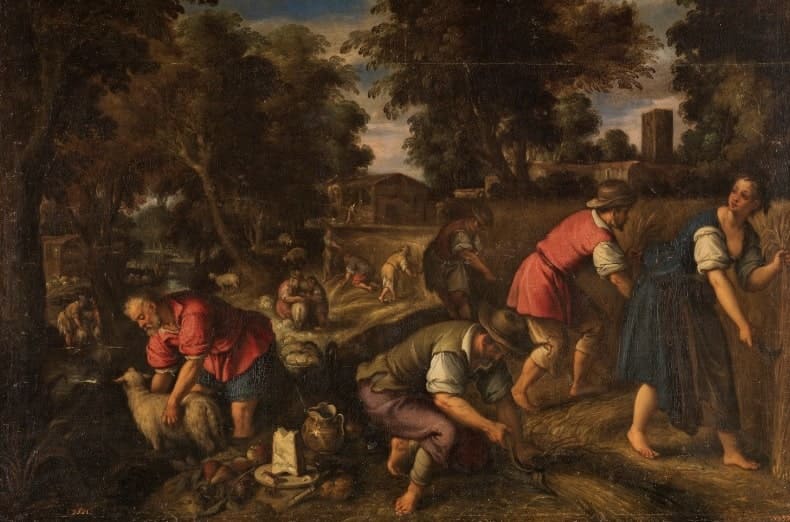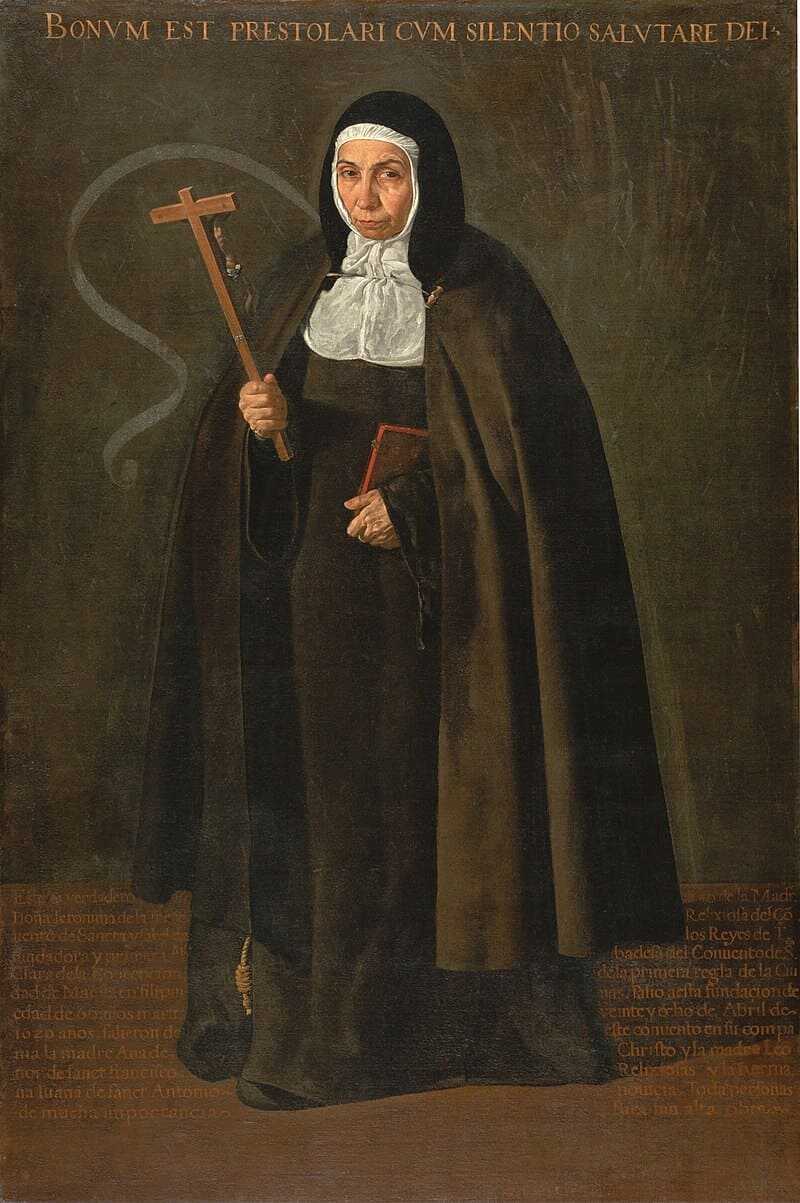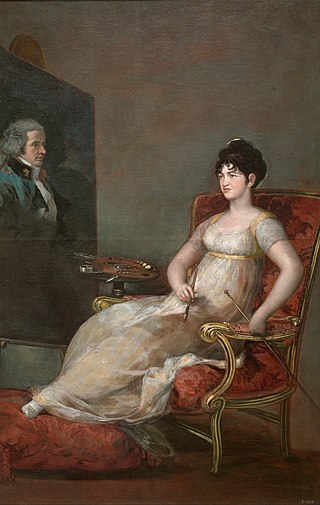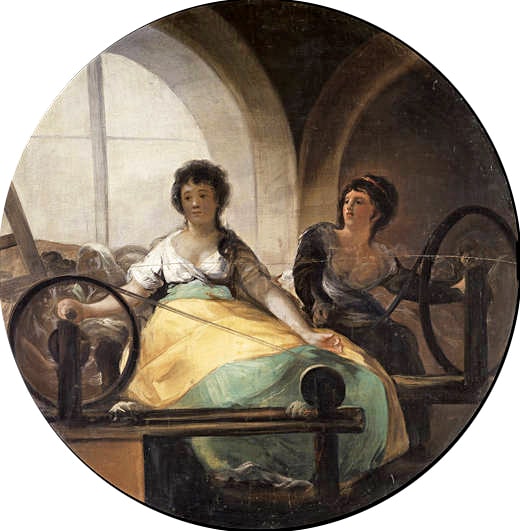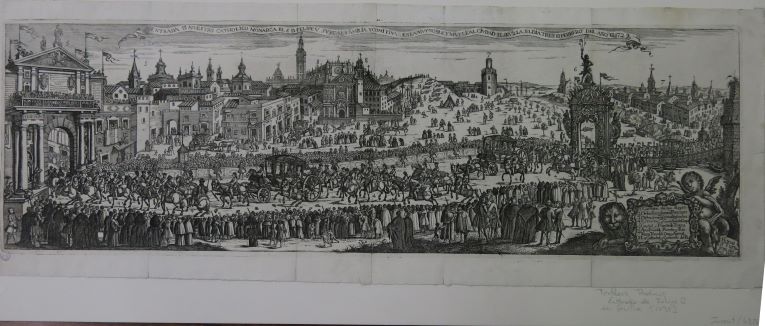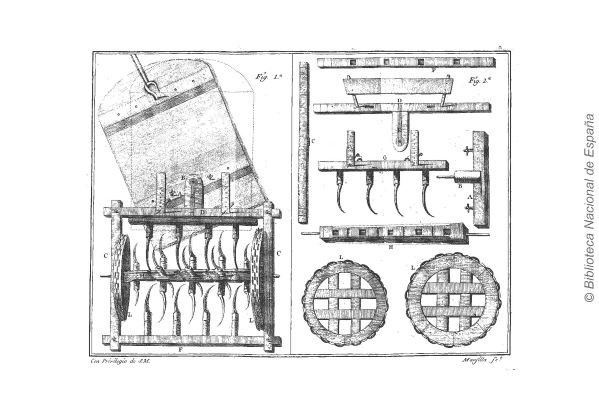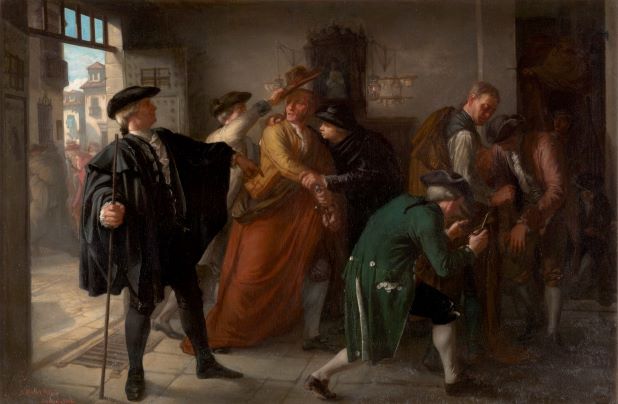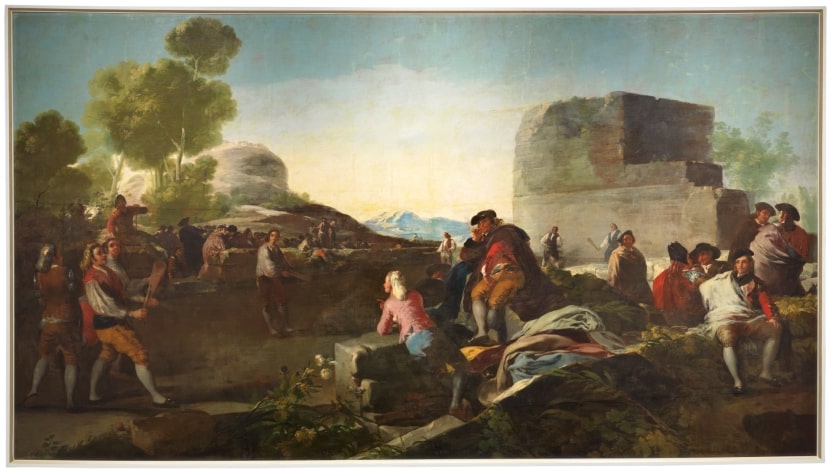Different groups of farmers, represented by Fiammingo, are engaged in summer farming activities such as mowing or shearing cattle
Images
The vocation of Jerónima de la Fuente, a Franciscan nun from the convent of Santa Isabel, led her to embark on missionary work in the Philippines
Velázquez’s work shows an interior of women working in textiles, emphasising their profession through the fable of Arachne
This work by Goya depicts women as artists during the 18th century, thus opening up new perspectives from Women’s History
Goya’s work was executed in a different format from the traditional one for the grand staircase of Godoy’s palace
A group of young women, portrayed by Goya, rest after they have laid out some clothes while waiting for them to dry
Fhilip V’s entry into the city of Seville, where the Court moved between 1729 and 1733.
Drawing of “Máquina para trillar las mises” by Lorenzo Sánchez Mansilla. It is an illustration of the work: “Dissertación de la máquina para trillar”, by Juan Cristóbal Manzanares
The image represents “El Motín de Esquilache”, a work by José Martí y Monsó, which received the Honourable Mention at the National Exhibition of Fine Arts in 1864.
Historical amusement with a ball, possibly the predecessor of another game


